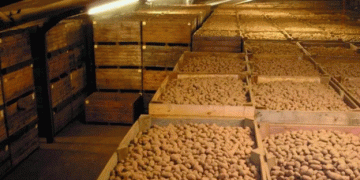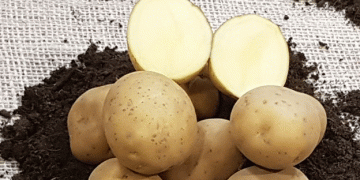When most people think of potatoes, Idaho inevitably springs to mind, thanks in large part to the iconic Ore-Ida brand. Yet, the story of Central Oregon’s quest to become the premier potato-growing region in the United States is a captivating chapter in American agricultural history.
A Historical Overview: Central Oregon’s Potato Ambitions
Central Oregon, particularly the region around Ontario, has long been known for its agricultural potential. In the mid-20th century, this area emerged as a serious contender for the title of the potato capital of the United States. The key to this ambition was the creation of Ore-Ida, a brand that combined the first two letters of Oregon and Idaho to symbolize a partnership between the two states in potato production.
Founded in 1952 by two local farmers, Fred M. Meyer and Jack H. Simplot, Ore-Ida started as a small operation in Ontario, Oregon, with a focus on producing high-quality frozen potato products. The company quickly gained national acclaim for its tater tots and other potato products, which were celebrated for their taste and quality. By the 1960s, Ore-Ida had become a household name, and the region’s potato fields were recognized for their high yield and quality.
The Science Behind Central Oregon’s Potato Success
The success of Central Oregon’s potato industry can be attributed to a combination of favorable environmental conditions and innovative agricultural practices. The region benefits from a unique climate characterized by warm days and cool nights, which is ideal for growing high-quality potatoes. According to a 2023 study from Oregon State University, the average annual potato yield in Malheur County, where Ontario is located, is approximately 425 cwt per acre, which is among the highest in the nation (Oregon State University Extension Service).
Moreover, the availability of volcanic soil rich in nutrients, combined with efficient irrigation methods from the Owyhee Irrigation District, created optimal conditions for potato cultivation. The introduction of innovative practices, such as precision agriculture and the development of disease-resistant potato varieties, further bolstered the region’s reputation as a premier potato-growing area.
Challenges and the Decline of Central Oregon’s Potato Industry
Despite these advantages, Central Oregon’s quest to become the potato capital faced significant challenges. The increasing costs of production, competition from other potato-growing regions, and a shifting agricultural focus led to a decline in the area’s dominance in the industry. According to the United States Department of Agriculture (USDA), as of 2023, Idaho remains the top potato-producing state, accounting for approximately 32% of the nation’s total potato production (USDA National Agricultural Statistics Service).
Additionally, changes in consumer preferences and the consolidation of the potato industry into larger corporate operations played a role in shifting the focus away from Central Oregon. Ore-Ida was eventually acquired by Heinz in 1965, which led to the relocation of some production facilities and the reduction of the brand’s ties to the region.
While Central Oregon did not ultimately become the potato capital of the United States, the region’s historical significance and contributions to the potato industry remain noteworthy. The success of Ore-Ida and the high-quality potatoes produced in Ontario, Oregon, serve as a testament to the innovation and dedication of the local agricultural community. As we look to the future, the lessons from Central Oregon’s past can inspire new generations of farmers and agricultural engineers to pursue excellence in their own practices.





